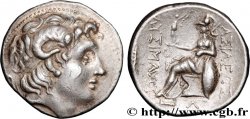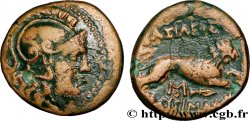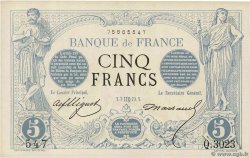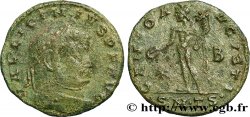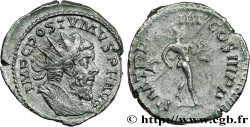v32_0019 - THRACE - THRACIAN KINGDOM - LYSIMACHOS Tétradrachme
MONNAIES 32 (2007)
Starting price : 750.00 €
Estimate : 1 200.00 €
Realised price : 850.00 €
Number of bids : 2
Maximum bid : 1 001.00 €
Starting price : 750.00 €
Estimate : 1 200.00 €
Realised price : 850.00 €
Number of bids : 2
Maximum bid : 1 001.00 €
Type : Tétradrachme
Date: c. 280-250 AC.
Mint name / Town : Byzance
Metal : silver
Diameter : 29 mm
Orientation dies : 12 h.
Weight : 16,89 g.
Rarity : R1
Coments on the condition:
Exemplaire parfaitement centré des deux côtés. Portrait de toute beauté, bien venu à la frappe. Frappe légèrement molle au revers. Patine grise avec des reflets mordorés
Catalogue references :
Predigree :
Cet exemplaire provient de la vente Argenor du 3 mai 2006, n° 47
Obverse
Obverse legend : ANÉPIGRAPHE.
Obverse description : Tête imberbe d'Alexandre le Grand sous les traits de Zeus-Ammon, cornu et diadémé à droite.
Reverse
Reverse description : Athéna nicéphore assise à gauche sur un trône, tenant une petite Niké de la main droite qui couronne le nom de Lysimaque et le coude gauche reposant sur un bouclier orné d'un masque de lion ; le trône est orné d’un rinceau.
Reverse legend : BASILEWS/ LUSIMACOU/ DI, (Bsilews Lusimacou)
Reverse translation : (du roi Lysimaque).
Commentary
Mêmes coins que l’exemplaire de Meydancikkale (Gülnar II, n° 2696, pl. 80) et que l’exemplaire du “Hoard from Mesopotomia”, MN. 13, 1967, p. 46, n° 23, pl. XV) et même coin de droit que l’exemplaire du trésor de Meydancikkale (Gülnar II, n° 2697, pl. 80, monogramme AP). L’exemplaire du trésor de Mésopotamie est daté par G. K. Jenkins vers 250 avant J.-C. L’association de plusieurs coins de revers couplés à un coin de droit, semble démontrer que les émissions sont courtes.
Same dies as the Meydancikkale copy (Gülnar II, no. 2696, pl. 80) and the copy from the “Hoard from Mesopotomia”, MN. 13, 1967, p. 46, no. 23, pl. XV) and same obverse die as the copy from the Meydancikkale hoard (Gülnar II, no. 2697, pl. 80, monogram AP). The copy from the Mesopotamia hoard is dated by G.K. Jenkins to around 250 BC. The combination of several reverse dies coupled with an obverse die seems to demonstrate that the issues are short
Same dies as the Meydancikkale copy (Gülnar II, no. 2696, pl. 80) and the copy from the “Hoard from Mesopotomia”, MN. 13, 1967, p. 46, no. 23, pl. XV) and same obverse die as the copy from the Meydancikkale hoard (Gülnar II, no. 2697, pl. 80, monogram AP). The copy from the Mesopotamia hoard is dated by G.K. Jenkins to around 250 BC. The combination of several reverse dies coupled with an obverse die seems to demonstrate that the issues are short








 Report a mistake
Report a mistake Print the page
Print the page Share my selection
Share my selection Ask a question
Ask a question Consign / sell
Consign / sell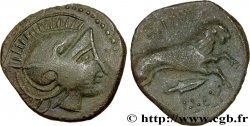
 Full data
Full data